What are the K-2 phonics skills our learners need to know? In what order do we teach them? Learn what they are and download a free printable with all the K-2 phonics skills listed for you!
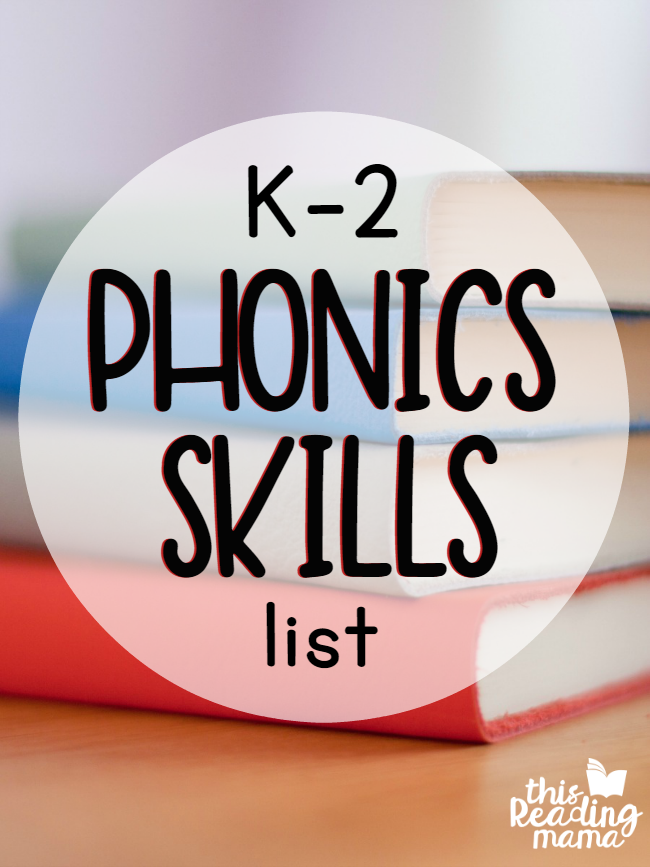
Be sure to click on all the images towards the bottom of this post to read all the articles in our 6 Components of Reading Instruction in K-2!
Phonics has been one of the “buzz” words in the world of literacy for several years now. I think we can all agree that it’s needed for our learners to become better readers and spellers.
But there needs to be an order to teaching phonics so that the logic of our language can be understood by our learners. And while one curriculum may vary from another, here is the general sequence that most K-2 phonics programs I’ve seen follow.
Don’t miss all the freebies sprinkled throughout this post, especially the more in-depth K-2 Phonics Skill List towards the bottom!
*Note: All of your learners are different. In order to best see which phonics skills each learner needs to work on, feel free to use my free phonics assessment.
K-2 Phonics Skills
1. Letter Sounds
The first place to start is letter sounds. Of course, this starts with toddlers and preschoolers, but if you teach learners in K who don’t know their letter sounds, this is your starting point.
You can practice phonemic awareness as learners listen for letter sounds at the beginning, middle, and end of words.
Free resources for Letter Sounds:
- Write the Missing Letter {for beginning sounds}
- Write the Missing Letter {for ending sounds}
- Sorts for Beginning Sounds
- Beginning, Middle, and Ending Sound Clip Cards
2. Short Vowel Patterns
Some people start with simple word families after most letter sounds have been mastered. This is usually my go-to when most letters have been mastered, as you can see with our Printable Word Family Books. Others go straight to CVC words {simple, short vowel words}.
Free printable resources for Word Families:
- Printable Word Family Books
- Print & Play Word Family Games
- Short Vowel Word Family Houses
- Word Family Mini Books
Free resources for CVC words:
3. Blends & Digraphs
Around the same time that kids are learning those short vowel skills, they can be introduced to blends and digraphs. Grab a free Blends and Digraphs Chart + grab great visuals for them.
*Bonus! This is also where I like to introduce the -ing family. Because -ing is such a common ending on words, -ing is a word part that our learners need to know by sight and by sound!
Blends & Digraphs Freebies:
- Blends & Digraphs BINGO Games
- Blend and Dab Beginning Blends Pages
- No Prep Beginning Blends Games
- Build & Write Digraph Mats
4. Bossy R Words
I’ve always taught bossy r {also called r-influence vowels} words directly after teaching some of the short vowel words with blends/digraphs. Some curricula I’ve seen teaches this skill after the long vowel patterns. Either way you slice it, bossy r patterns are important for learners to know!
Free Bossy r Printables:
5. Long Vowel Words
Long vowels come next in the list of phonics skills K-2 learners need. I start with CVCe words {words with silent or sneaky e} and often compare them with short vowel words.
TONS of CVCe Freebies:
Long vowel teams come next. Personally, I think the ee vowel team is a good one to start with since it’s one of the most common long vowel teams. And it’s also in a word most 1st graders already know: see.
Long Vowel Team Freebies:
- Vowel Team Read & Draw Pages
- ai/ay games
- Froot Loop Words
- Vowel Team Picture Cards
- Vowel Team Clip Cards
- Roll & Read ee words
6. Dipthongs & Other Vowel Patterns
There are other vowel teams that are a little more difficult. While they can be mixed in with long vowel teams, it may be easier to teach them after learners have conquered the more common long vowel teams. These include patterns such as ow as in cow, oo as in hook, ou, oi, oy, au, and aw.
These Vowel Chunk Spelling Cards feature diphthongs. Our Print & Play Diphthong Games {not free} are a great, NO PREP way to practice these skills.
K-2 Phonics Skills in Longer Words
When studying these phonics patterns, learners mostly develop them in single syllable words. But once they are familiar with short vowel patterns like kit and ten, you can show them how to use that knowledge to read longer words, such as kit-ten.
Studying how to break apart syllables using the 6 most common syllable division types is also very helpful to grow them as readers and spellers.
You Might Also Like:
- Cut the Cheese Open & Closed Syllables
- Open & Closed Syllable Games
- Strategies for Reading Longer Words Charts
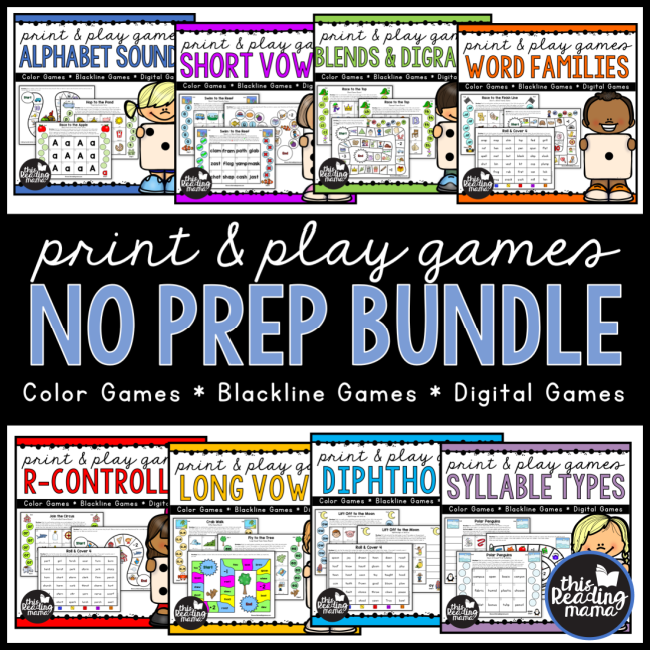 Would you like a NO PREP {and fun} way to DIFFERENTIATE with these phonics skills?
Would you like a NO PREP {and fun} way to DIFFERENTIATE with these phonics skills?
You’ll love my Print & Play Phonics Games Bundle!
Get the K-2 Phonics Skills List!
Read all the posts in this series!
Enjoy!
~Becky
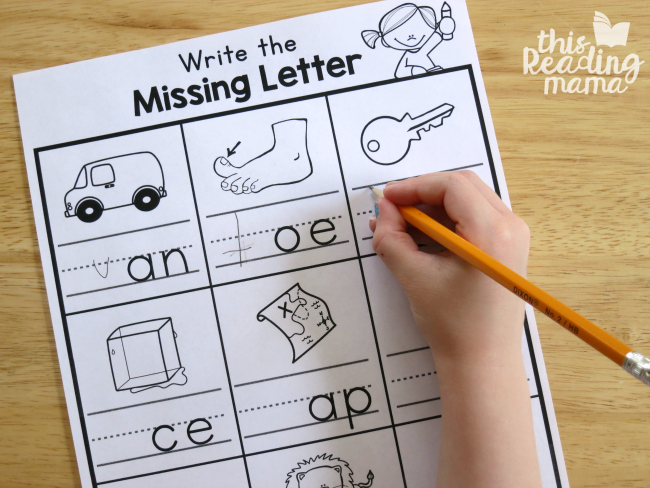
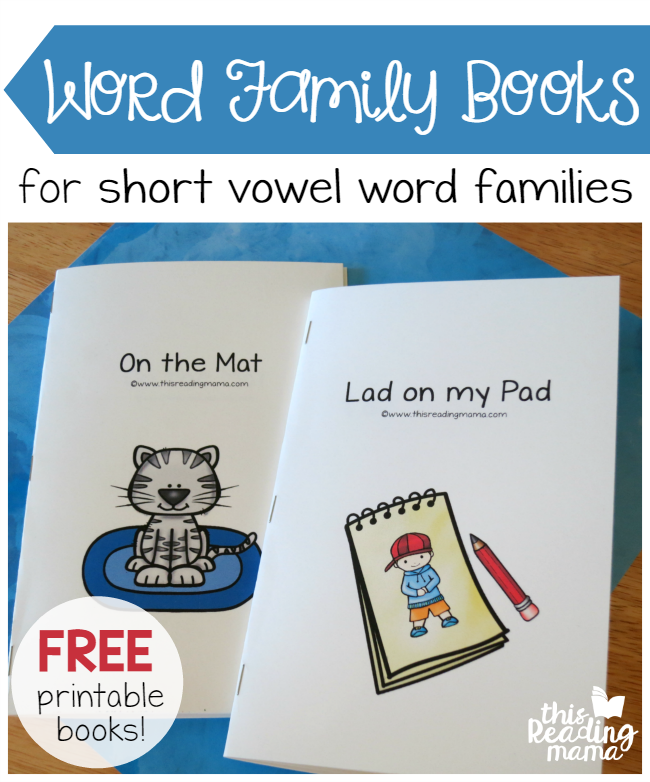
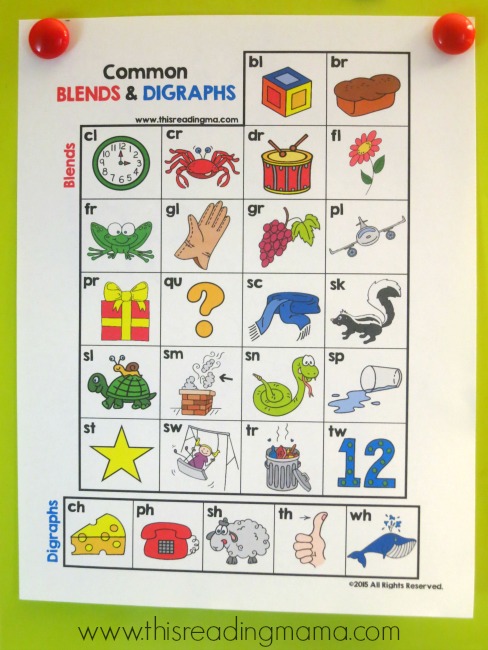
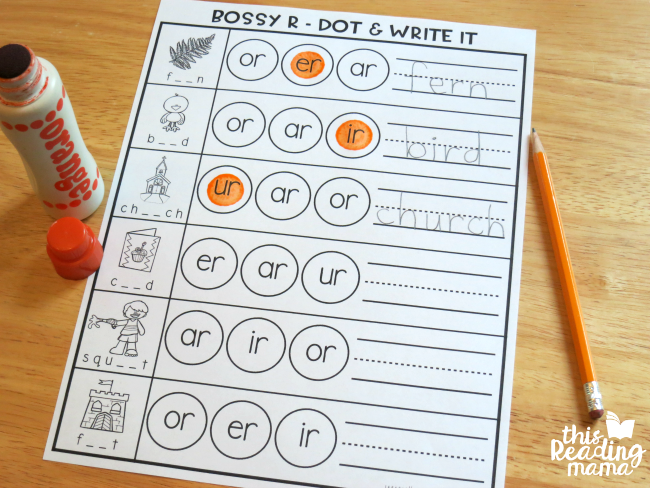
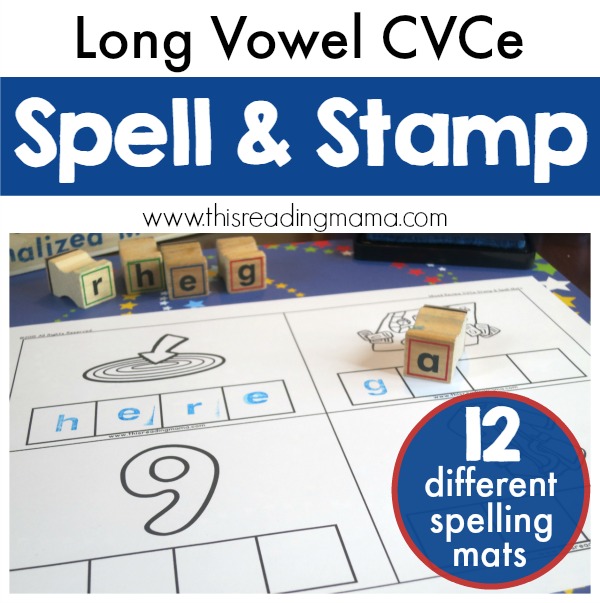
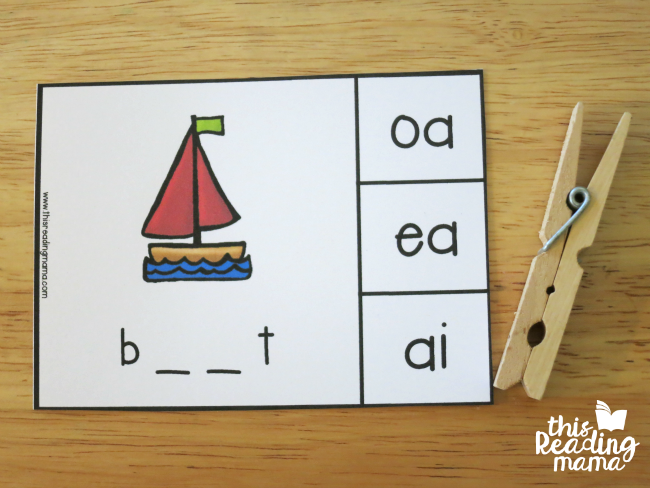
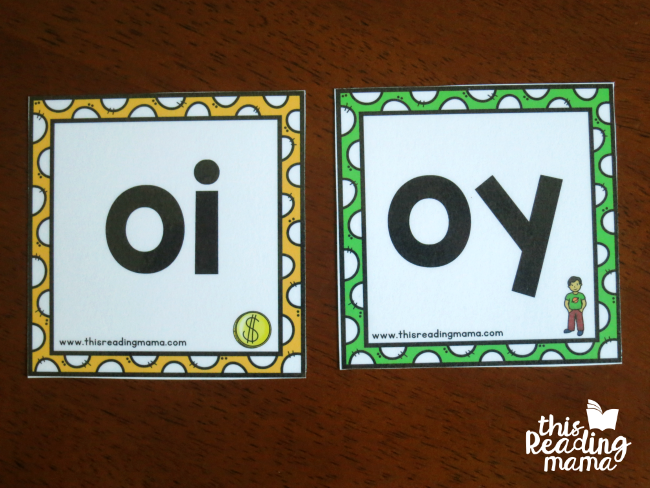
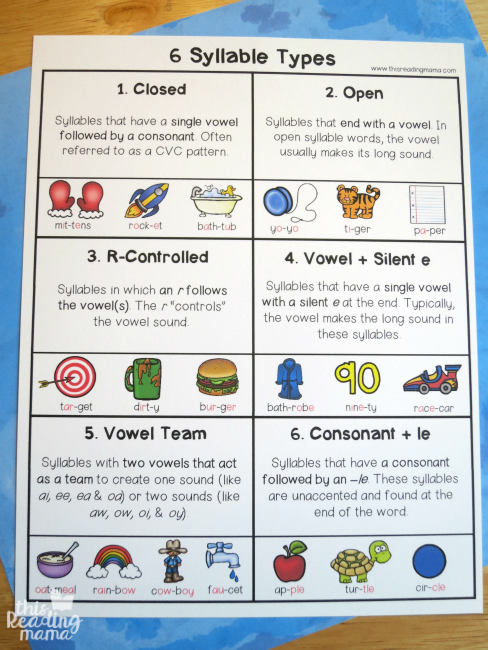

I am looking for your elephant do a dot page. Is it still available? It is recommended in the ABC;s of Preschool Book by Anne Geiger.
It’s here –> https://thisreadingmama.com/learning-the-alphabet-letter-e-pack/
First, thank you for all your wonderful resources! My homeschooled kindergartner has loved all the hands-on resources and is doing a great job! We’ve been chugging along well, but right now I’m a little stuck with “ea” words. Long e is the most common sound, but there are so many words that are often short e (including read and read!) Do you have any resources or advice for teaching this?
I hear you! See if this chart helps with that -> https://thisreadingmama.com/phonics-patterns-multiple-sounds-chart/
Where does a mama start? After sight words are known,and mostly remembered. 👀Please advise
See if this article helps -> https://thisreadingmama.com/teaching-kids-how-to-read/
I purchased the phonics sound cards. Only there doesn’t seem to be a gh card. Am I missing something?
The phonics cards do not have “gh.” There are a few other cards people have asked me for. As soon as I have internet and a computer at my new house, I will try to get these added to the set. 🙂